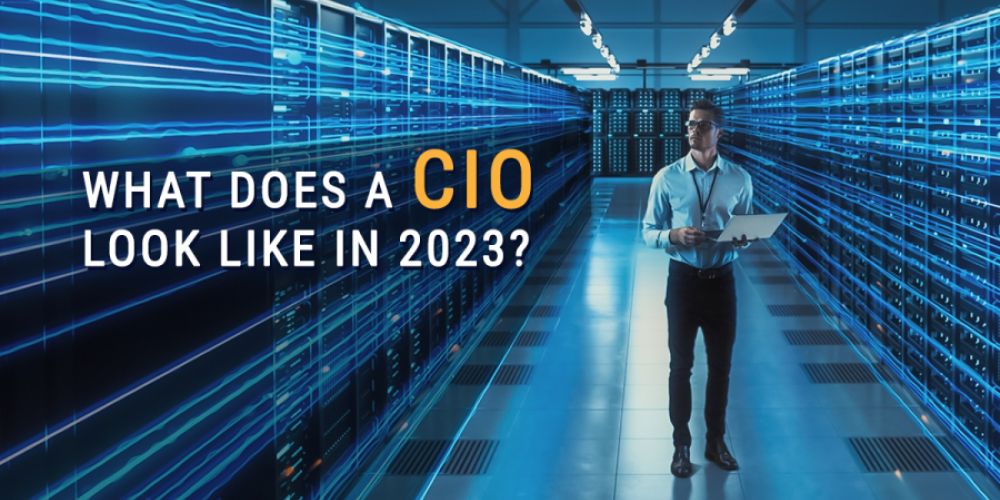
Today’s CIO role is evolving more rapidly than ever. Here’s what’s driving it.
EVERYTHING HAS CHANGED
If we’re being blunt, CIOs of old were little more than tactically-focused bureaucrats who had to ask others – typically the CEO, CFO, or COO – for budgetary approval. They rarely participated in strategic decision making, as the rest of the leadership group tended to view them in little more than a maintenance role. CIOs of old were largely focused on maximizing uptime, staffing the help desk, and replacing employee laptops every few years.
This may have been sufficient when most of an organization’s technology infrastructure was stuck behind a glass wall and was tended to by highly trained specialists in white coats. But tectonic shifts in how technology is designed, managed, and ultimately used, have driven similarly massive changes in expectations.
Pervasive advancements in technology across the economy have forced all organizations to rethink their approach to IT. What was once perceived as little more than a cost center is now an integral factor in top- and bottom-line performance.
Blame this transition on equally massive changes in how customers and prospects use technology. For most organizations, tech is now the first line of contact – and in many cases, the only line of contact – for their stakeholders. That website, mobile app, or ecommerce portal, for example, is now a high-risk revenue chokepoint for many organizations: if it goes dark, the very future of the company hangs in the balance.
WHAT’S DRIVING IT
The evolution of the CIO role isn’t happening in a vacuum. Here are a few key factors that explain why:
- Customer expectations. Technology no longer lurks in the background. With customer-facing technology now defining day-to-day business outcomes, CIOs have been vaulted well beyond their humble service provider roots. They are now critical enablers of customer lifecycles entirely built on their technology.
- Digital transformation. As organizations shift more of their planning and operations into the digital space to remain competitive, IT is increasingly responsible for identifying new technologies that drive productivity, efficiency, and ultimately revenues and profits. Old-style CIOs would have simply waited for other senior leaders to give them their marching orders. Now, CIOs build the tech-centric strategies for everyone else to follow.
- Innovation agenda. IT leaders can’t be expected to drive the technology that drives the business if they aren’t also experts in the business itself. A profound understanding of business strategies, operations, and execution gives today’s CIOs the ability to link business opportunities to the innovation agenda – and in doing so enable go-to-market competencies for next-level products and services.
- Cybersecurity. As the threat landscape becomes more turbulent, CIOs must increasingly assume organizational responsibility for ensuring the security of all organizational systems, resources, and data. CIOs and business leaders must work together as a cohesive unit, to develop robust cybersecurity strategies and programs.
FOCUS, FOCUS, FOCUS
All of this means technology is no longer some tertiary function like building maintenance. It is now the very foundation of organizational success.
In fact, according to McKinsey, technology has become a critical driver of competitiveness. And the CIO is the quarterback responsible for ensuring the organization leads with technology. In doing so, McKinsey says the modern CIO must focus on the following three priorities:
- Reimagine technology’s role within the organization by partnering with the various areas of the business to craft a tech-first business roadmap. CIOs must now find ways to integrate tech leadership and operational processes across the organization – using user-driven experiences as a starting point.
- Reinvent how technology is delivered by leveraging automation wherever feasible, shifting to more efficient service delivery models – such as platform-as-a-service – and embracing agile development and maintenance principles.
- Futureproof the organization by keeping architectures flexible, protecting infrastructure and related resources with advanced cybersecurity, and breaking down barriers that restrict data access.
THE BOTTOM LINE
It’s plainly obvious that today’s CIO has evolved from a bit player into a key pillar of an organization’s leadership team. It’s also plainly obvious that this evolution will continue indefinitely.
Tech leaders throughout the organization are increasingly taking their place as trusted sources of guidance, and consistent drivers of increasingly integrated technologies. Businesses live and die by the effectiveness of their technology leadership.
Reach out to us anytime if you’d like to discuss your own organization’s technology leadership needs, and how you, too, can position yourself to meet them.


